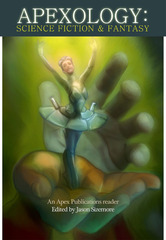Although my experiment has ended, the experience continues to ripple through my work habits, personal life and discussions with other authors. If you’re not familiar with the experiment, be sure to peer into my 100 Days: Social Media Black-Out Archives.
Several authors have come forward and told me that they were having the discussion about what social media was worth to them. A few of them, who are highly-visible, talked about the negative side effects of being too accessible, too.
Why am I telling you this? Because these conversations brought up a few, interesting points. The accessibility issue may be causing normally “sane” authors to act insecure with knee-jerk reactions or worse…sneaking doubts into the work itself. The sheer bombardment of information — both positive and negative — can be overwhelming, which is what happened when I wrote on the subject of insecurity and writing. Add opinions and snarky comments on top of that? It’s clear to me that information overload has its effects.
When I first heard the idea that being connected all the time allowed feelings of insecurity to flourish, it made all kinds of sense to me. I could even see how that played into my misplaced belief that I needed to be online for my audience, which was taking the focus off of my work. Being hyper-connected doesn’t work for me, so I’ve since figured out a better way to manage my time to focus on what’s important.
Since I first talked about my experiment, a few other authors have hopped offline to see how the lack of connection would affect them, too. Check out The Juggling Writer for Christopher Gronlund’s experiences. The kick-off post is entitled: The 50 Day Social Media Break.
That’s the key, isn’t it? When it comes down to it: there are no hard and fast rules about social media. You have to engage on a level you’re comfortable with. Community pressure, more so than what you’re doing right or wrong, is what drives social media gurus, experts and articles. The tools themselves aren’t all that important, except for the level of interaction. It’s your role within those interactions that creates a flurry of opinions and would-be facts.
Unfortunately, I feel this is something businesses, publishers and other professionals are still learning. The dollar signs people see when they talk about social media are starting to fade, as older, more relevant and direct forms of online marketing come back into style. The attitude is shifting from: Must be online twenty-four seven to monitor branding. To: Who cares if people are talking about your business? Guess what? People don’t necessarily want you listening. Sometimes? They just want to talk without fear that someone else is snooping in.
‘Course, the irony of that is that social media tools are still public, which is something even users haven’t quite figured out yet.
Another thing I feel a lot of us are missing, is that there is no such thing as one, grand online community anymore. Think “micro-communities” and “suburbs.” No doubt, one online community differs from one author to the next. An audience may be perfectly fine with the occasional “buy my book.” Another? May be pissed off the author even brought it up. This, moreso than any Tweet or message update, is why the people that are hyper-connected (myself included at one time) talk about the rules in an authoritative fashion. Some of those observations could be pulled out on a higher level because there are some good insights to be gleaned from them. Some of those comments are complete b.s., like when people say “You have to…” When that happens, replace the “you” with “I have to…” and you’ll better understand where that speaker is coming from.
Social media is a sociologist’s dream, really, because this is an example of peer pressure at its best and worst. We’re talking about tribalism here, not online marketing, which deeply affects creative individuals in different ways. (See: Tribes and Our Role as Writer for my take on the subject.)
I, for one, am happy with the rules I’ve established for myself, because I’m no longer a slave to the tools. That, to me, is more important than the “right” or “wrong” way to Tweet. To do that, I had to remove myself from the tools completely in order to figure out my “role” in the tribe and what I’m comfortable with. That may not be the case for you, but for me that’s part of what has been so incredibly fascinating about watching social media to begin with. Hmmm… Though I’m beginning to think my childhood aspirations of becoming Indiana Jones-esque are really shining through.
🙂


